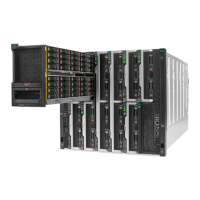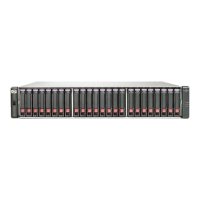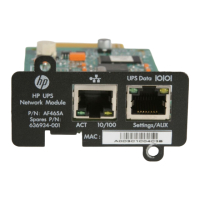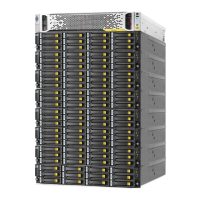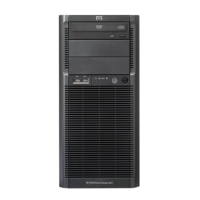Canada, Industry Canada (IC) NoticesCanada, Industry Canada (IC) Notices
Class A digital circuitry of this device complies with Canadian ICES-003.
This device complies with Industry Canada license-exempt RSS standards. Operation is subject to the following conditions:
1. This device may not cause interference.
2. This device must accept any interference, including interference that may cause undesired operation of the device.
Under Industry Canada regulations, the radio transmitters in this device may only operate using an antenna of a type and maximum (or
lesser) gain approved for the transmitter by Industry Canada. To reduce potential radio interference to other users, the antenna type
and its gain should be so chosen that the equivalent isotropically radiated power (e.i.r.p.) is not more than what is necessary for
successful communication.
WARNING:WARNING:
1. The device for operation in the band 5,150 MHz to 5,250 MHz is only for indoor use to
reduce the potential for harmful interference to cochannel mobile satellite systems.
2. The maximum antenna gain permitted for devices in the bands 5,250 MHz to 5,350 MHz and
5,470 MHz to 5,725 MHz shall comply with the e.i.r.p. limit.
3. The maximum antenna gain permitted for devices in the band 5,725 MHz to 5,825 MHz shall
comply with the e.i.r.p. limits specified for point-to-point and non point-to-point operation as
appropriate.
4. Users should also be advised that high-power radars are allocated as primary users (that is,
priority users) of the bands 5,250 MHz to 5,350 MHz and 5650-5850 MHz and that these
radars could cause interference and damage to LE-LAN devices, or both.
Radio Frequency (RF) Exposure InformationRadio Frequency (RF) Exposure Information
This equipment complies with IC RSS-102 radiation exposure limits set forth for an uncontrolled environment. This equipment should be
installed and operated with a minimum distance of 20 cm between the radiator and your body.
This device and its antennas must not be colocated or operating in conjunction with any other antenna or transmitter.
This device has been certified for use in Canada. Status of the listing in the Industry Canada REL (Radio Equipment List) can be found at
the following website:
http://www.ic.gc.ca/app/sitt/reltel/srch/nwRdSrch.do?lang=enghttp://www.ic.gc.ca/app/sitt/reltel/srch/nwRdSrch.do?lang=eng
Additional Canadian information on RF exposure can also be found at the following website:
http://www.ic.gc.ca/eic/site/smt-gst.nsf/eng/sf08792.htmlhttp://www.ic.gc.ca/eic/site/smt-gst.nsf/eng/sf08792.html
Canada, avis d'Industry Canada (IC)Canada, avis d'Industry Canada (IC)
La circuiterie numérique de Classe A cet appareil est conforme à la norme canadienne ICES-003.
Cet appareil est conforme aux normes d'exemption de licence RSS d'Industry Canada.
Son fonctionnement est soumis aux deux conditions suivantes:
1. Cet appareil ne doit pas causer d'interférence.
2. Cet appareil doit accepter toute interférence, notamment les interférences qui peuvent affecter son fonctionnement.
Conformément aux réglementations d'Industry Canada, les émetteurs radio de cet appareil ne peuvent fonctionner qu'à l'aide d'une
antenne dont le type et le gain maximal (ou minimal) pour ces émetteurs - transmetteurs sont approuvés par Industry Canada. Pour
réduire le risque d'interférence éventuelle pour les autres utilisateurs, le type et le gain de l'antenne doivent être choisis de manière à ce
que la puissance isotrope rayonnée é quivalente (p.i.r.e.) minimale nécessaire à une bonne communication soit fournie.
WARNING:WARNING:
1. Les dispositifs fonctionnant dans la bande 5 150 MHz - 5 250 MHz sont réservés
uniquement pour une utilisation à l'intérieur afin de réduire les risques de brouillage
préjudiciable aux systèmes de satellites mobiles utilisant les mêmes canaux
2. Le gain maximal d'antenne permis pour les dispositifs utilisant les bandes 5 250 MHz - 5 350
MHz et 5 470-5 725 MHz doit se conformer à la limite de p.i.r.e.
3. Le gain maximal d'antenne permis (pour les dispositifs utilisant la bande 5 725 MHz -5 825
MHz) doit se conformer à la limite de p.i.r.e. spécifiée pour l'exploitation point à point et non
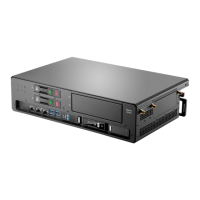
